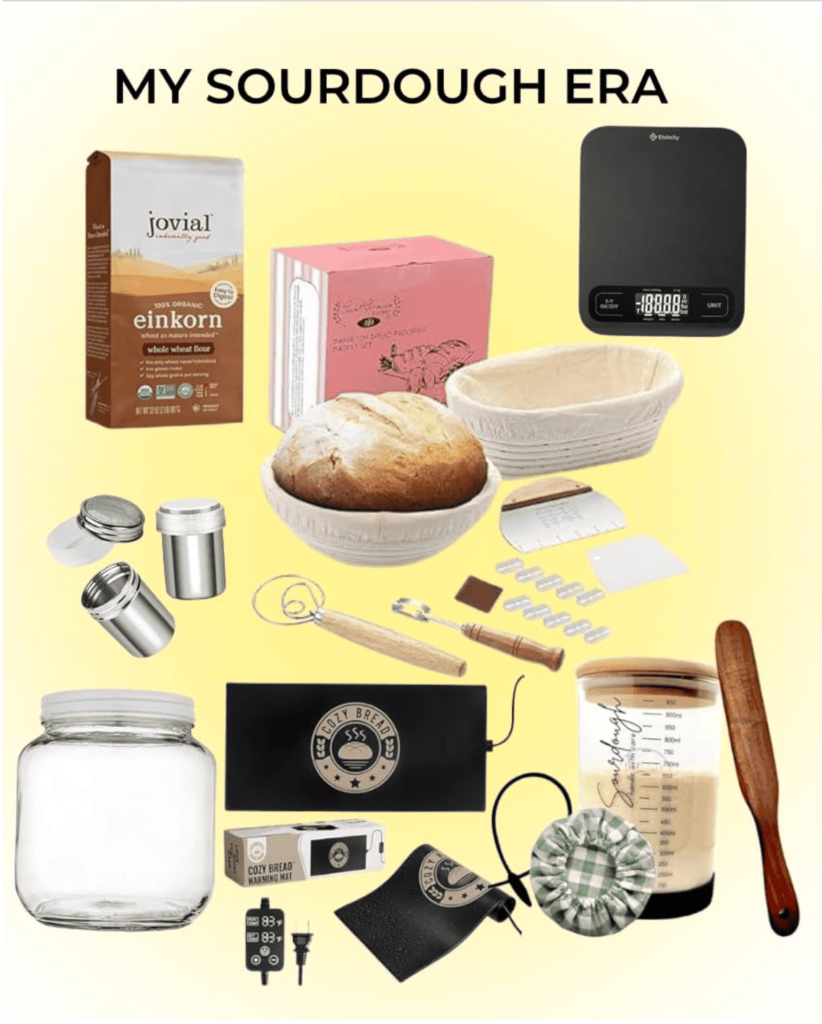Classic Einkorn Sourdough Bread Recipe
I’m not going to say that I’m in my sourdough era, but here I am making sourdough. If you have ever wanted to bake a bread that combines the rich, nutty flavor of einkorn flour with the delightful texture of sourdough then this classic einkorn sourdough bread recipe is the easy solution.

PIN this for later!
It’s a wholesome, delicious option that elevates your homemade bread game, turning a simple loaf into something extraordinary.
This blog post contains affiliate links. The opinions are wholly my own from my own experience. I may earn a small commission from clicks through to the websites that end in a purchase.
The Unique Flavor of Einkorn
I love that einkorn, one of the oldest cultivated grains, known as an ancient grain that offers a distinct flavor profile that sets it apart from modern wheat varieties. Its nutty and slightly sweet taste complements the tanginess of sourdough, making it a delightful choice for bread enthusiasts.
Einkorn wheat stands out for its impressive nutritional benefits. Unlike modern wheat, which has been processed and refined over time to create soft, white flour—often at the expense of its nutrients—einkorn remains untouched.
It retains its natural fiber, is loaded with vitamins and minerals, and is rich in carotenoids that support overall health.
Choosing einkorn flour not only enhances the flavor of your bread but also contributes to its nutritional value. This ancient grain is rich in protein and essential minerals, providing a wholesome base for your homemade loaf.
The Best Einkorn Sourdough Bread Recipe
This recipe is not just about making bread; it’s about creating a comforting vibe for your meals. The natural fermentation process of sourdough provides a depth of flavor that you won’t find in regular bread, making every bite a treat.
Plus, it’s perfect for sandwiches, toasted with butter, or simply enjoyed fresh out of the oven.
Equipment Needed to make Sourdough Bread
- cozy bread warming mat
- sourdough starter kit
- wooden spurdle
- food scale
- dutch oven
- proofing baskets
Ingredients
- 500 grams einkorn flour
- 350 grams water (room temperature)
- 100 grams active sourdough starter
- 10 grams salt
Instructions
- Mix Ingredients: In a large bowl, combine the einkorn flour and water. Stir until no dry flour remains. Let it rest for 30 minutes (autolyse).
- Add Starter and Salt: After the autolyse, add the active sourdough starter and salt. Mix until incorporated.
- Bulk Fermentation: Let the dough rise at room temperature for about 4-5 hours, folding it every 30 minutes for the first 2 hours. I used the Cozy Bread warming mat to keep it at a warm temperature becuase my house is always so cold. It works like a charm!
- Shape the Dough: After bulk fermentation, gently turn the dough out onto a floured surface, shape it into a round loaf, and place it in a lightly floured proofing basket.
- Final Proof: Cover and let it rise for another 2-3 hours at room temperature or overnight in the fridge. I did overnight in the fridge.
- Preheat the Oven: About 30 minutes before baking, preheat your oven to 450°F (230°C) with a Dutch oven inside.
- Bake: Carefully transfer the dough into the preheated Dutch oven, cover, and bake for 30 minutes. Remove the lid and bake for an additional 15-20 minutes until golden brown.
- Cool: Let the bread cool on a wire rack before slicing.
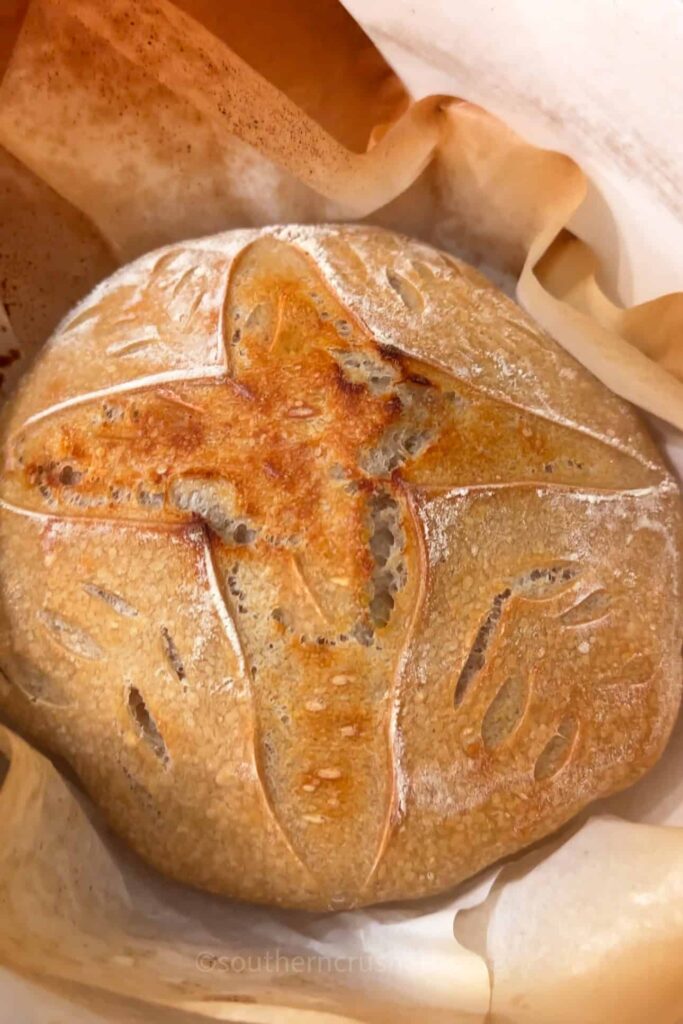
Creating the Perfect Sourdough Starter
The heart of sourdough bread lies in its starter. A healthy, active sourdough starter is vital for achieving that characteristic rise and flavor.
It’s a simple mixture of flour and water that ferments over time, capturing wild yeast and bacteria from the environment.

To maintain an active starter, regular feedings of flour and water are necessary.
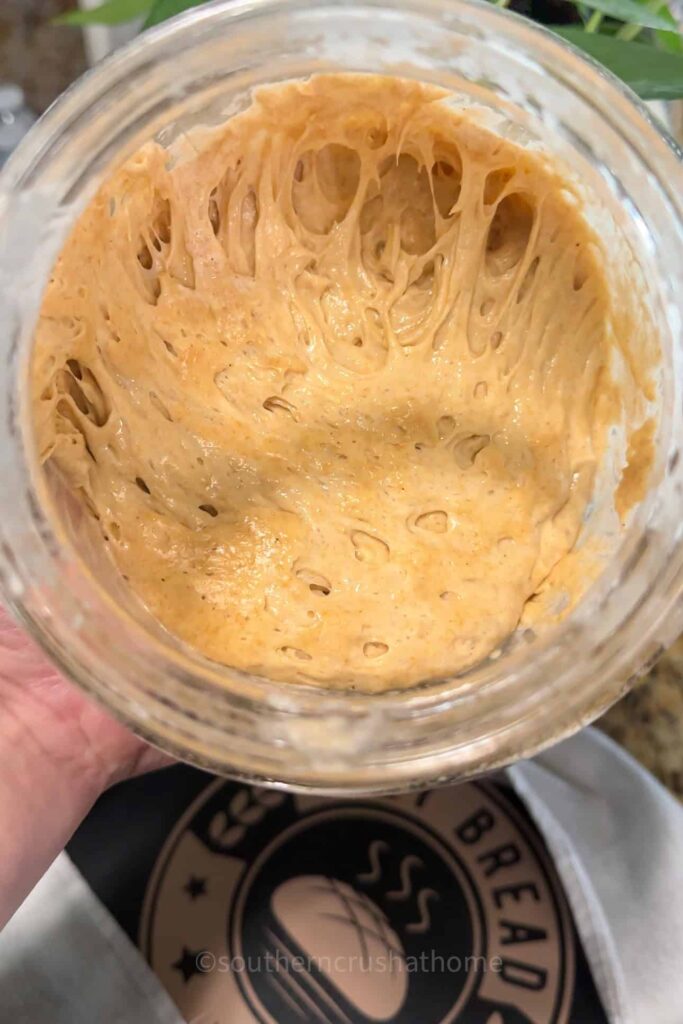
This process cultivates the natural yeasts, which will give your einkorn bread its beautiful structure and complex taste.
Check out my post all about sourdough starter HERE.
The Art of Mixing and Fermentation
Mixing the einkorn flour with water is the initial step in the bread-making process. This phase, known as autolyse, allows the flour to fully hydrate, enhancing gluten development without excessive kneading.
After the autolyse period, adding the active sourdough starter and salt is crucial. This will kickstart fermentation, allowing the dough to rise and develop flavor over several hours. Folding the dough during this phase helps strengthen its structure, ensuring a lighter crumb.
Shaping and Proofing Your Dough
After bulk fermentation, gently turning the dough onto a floured surface to shape it is essential. This step helps retain the air bubbles built up during fermentation, which contributes to the bread’s airy texture.

Placing the shaped dough into a proofing basket allows it to rise further before baking. This final proofing stage is where the dough develops its final shape and texture, readying it for the oven.
Baking to Perfection
Preheating your oven with a Dutch oven inside is key to achieving that golden, crusty exterior. The Dutch oven traps steam, creating a bakery-like environment that encourages a beautiful rise and crust formation.
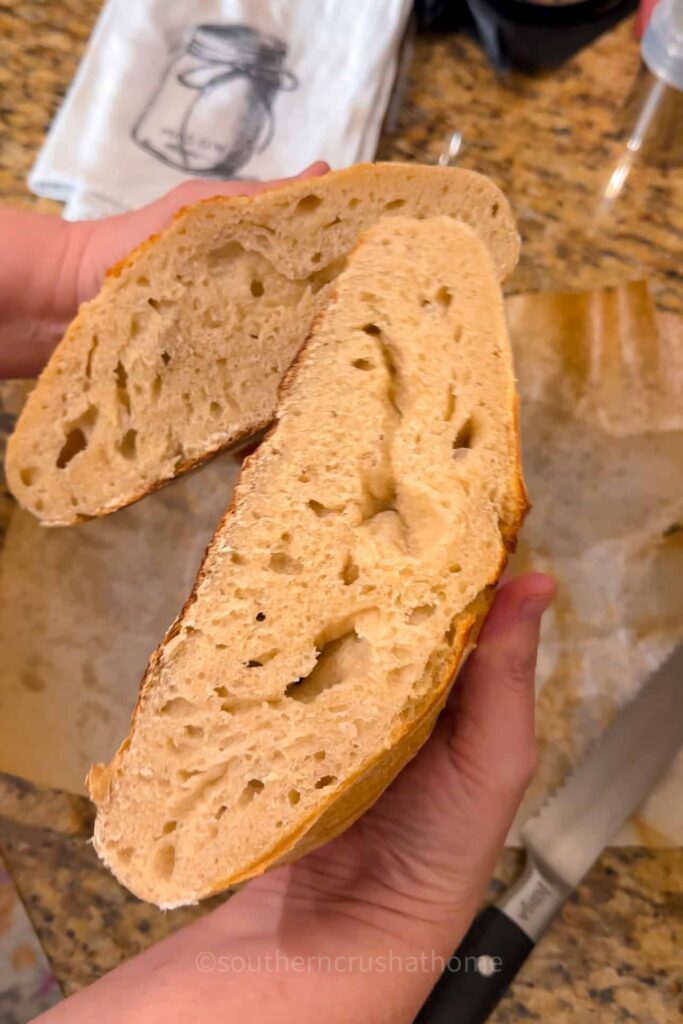
Baking the loaf first covered and then uncovered ensures a crisp crust while allowing the bread to develop its flavor. The result is a stunning loaf with a deep golden color and a sound that sings when tapped—a sign of a well-baked bread.
Serving and Enjoying Your Bread
After patiently waiting for your loaf to cool, it’s time to slice into your masterpiece. The soft, airy interior is just waiting to be paired with butter, spreads, or enjoyed plain. Each slice is a testament to the time and care invested in the baking process.
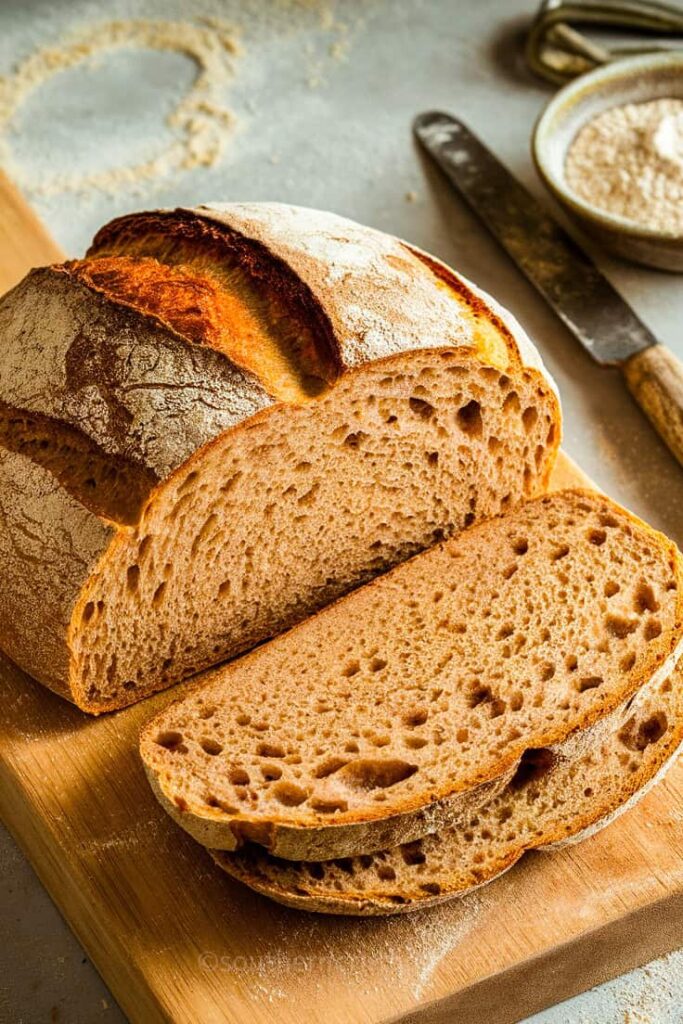
Whether you serve it at breakfast, lunch, or dinner, this einkorn sourdough bread will certainly impress. Its unique flavor and texture make it a versatile accompaniment to any meal, bringing warmth and satisfaction to the table.
This einkorn sourdough bread is crusty on the outside and soft on the inside, boasting a mildly tangy taste with a hint of nuttiness. It’s a nutritious option due to the ancient grain, making it not only delicious but also a healthy choice.
Cook and Prep Times
- Prep Time: 15 minutes
- Cook Time: 45 minutes
- Total Time: 5-7 hours (including fermentation time)
My Favorite Dutch Ovens
Sourdough Discard
What should you do with your sourdough discard? You know, the portion you “discard” after each sourdough starter feeding? I have several delicious sourdough discard recipes to share with you.

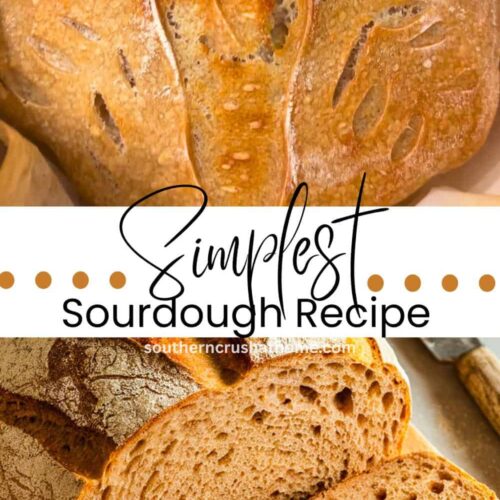
Classic Einkorn Sourdough Bread Recipe
Ingredients
- 500 grams einkorn flour
- 350 grams water room temperature
- 100 grams active sourdough starter
- 10 grams salt
Instructions
- Mix Ingredients: In a large bowl, combine the einkorn flour and water. Stir until no dry flour remains. Let it rest for 30 minutes (autolyse).
- Add Starter and Salt: After the autolyse, add the active sourdough starter and salt. Mix until incorporated.
- Bulk Fermentation: Let the dough rise at room temperature for about 4-5 hours, folding it every 30 minutes for the first 2 hours.
- Shape the Dough: After bulk fermentation, gently turn the dough out onto a floured surface, shape it into a round loaf, and place it in a floured proofing basket.
- Final Proof: Cover and let it rise for another 2-3 hours at room temperature or overnight in the fridge.
- Preheat the Oven: About 30 minutes before baking, preheat your oven to 450°F (230°C) with a Dutch oven inside.
- Bake: Carefully transfer the dough into the preheated Dutch oven, cover, and bake for 30 minutes. Remove the lid and bake for an additional 15-20 minutes until golden brown.
- Cool: Let the bread cool on a wire rack before slicing.


